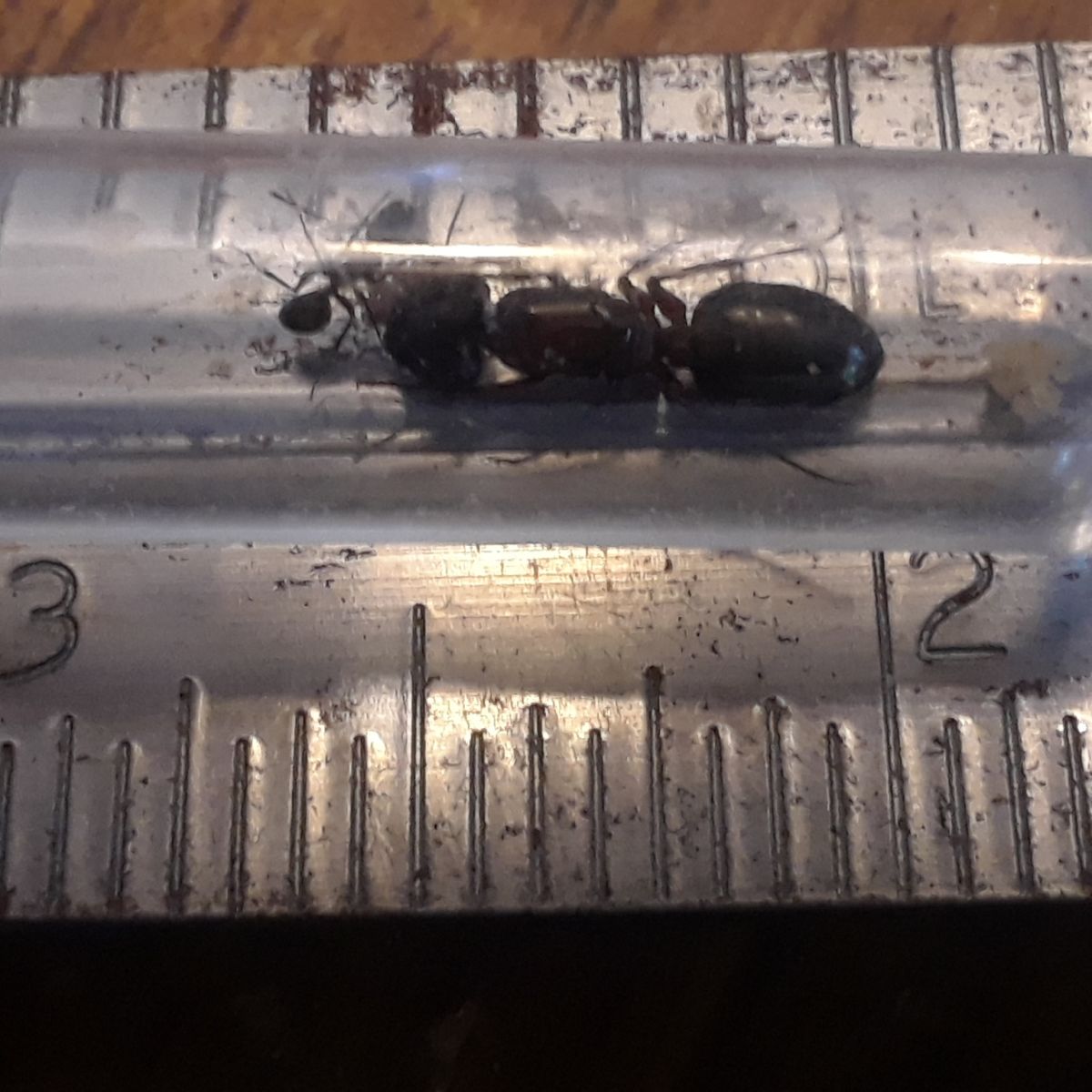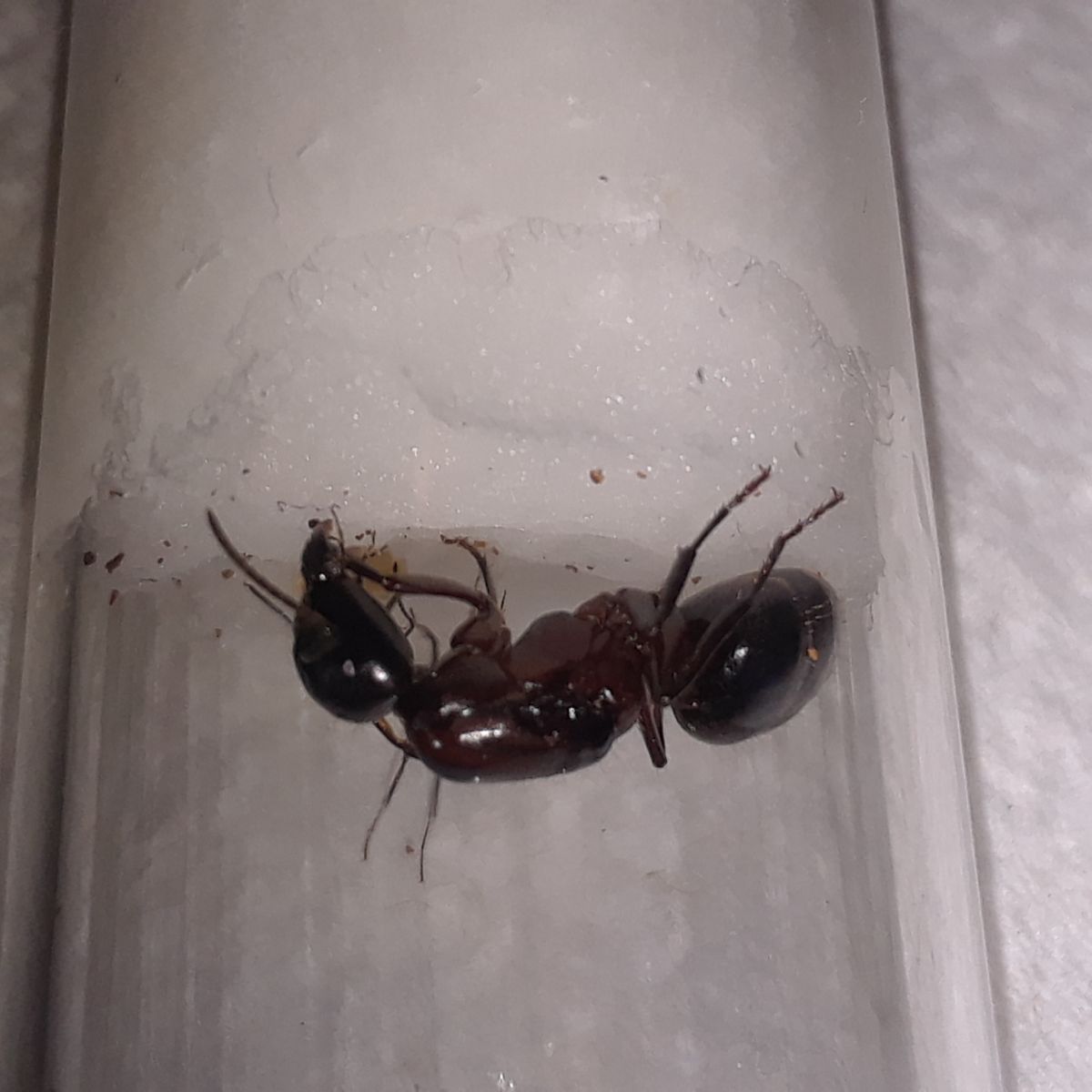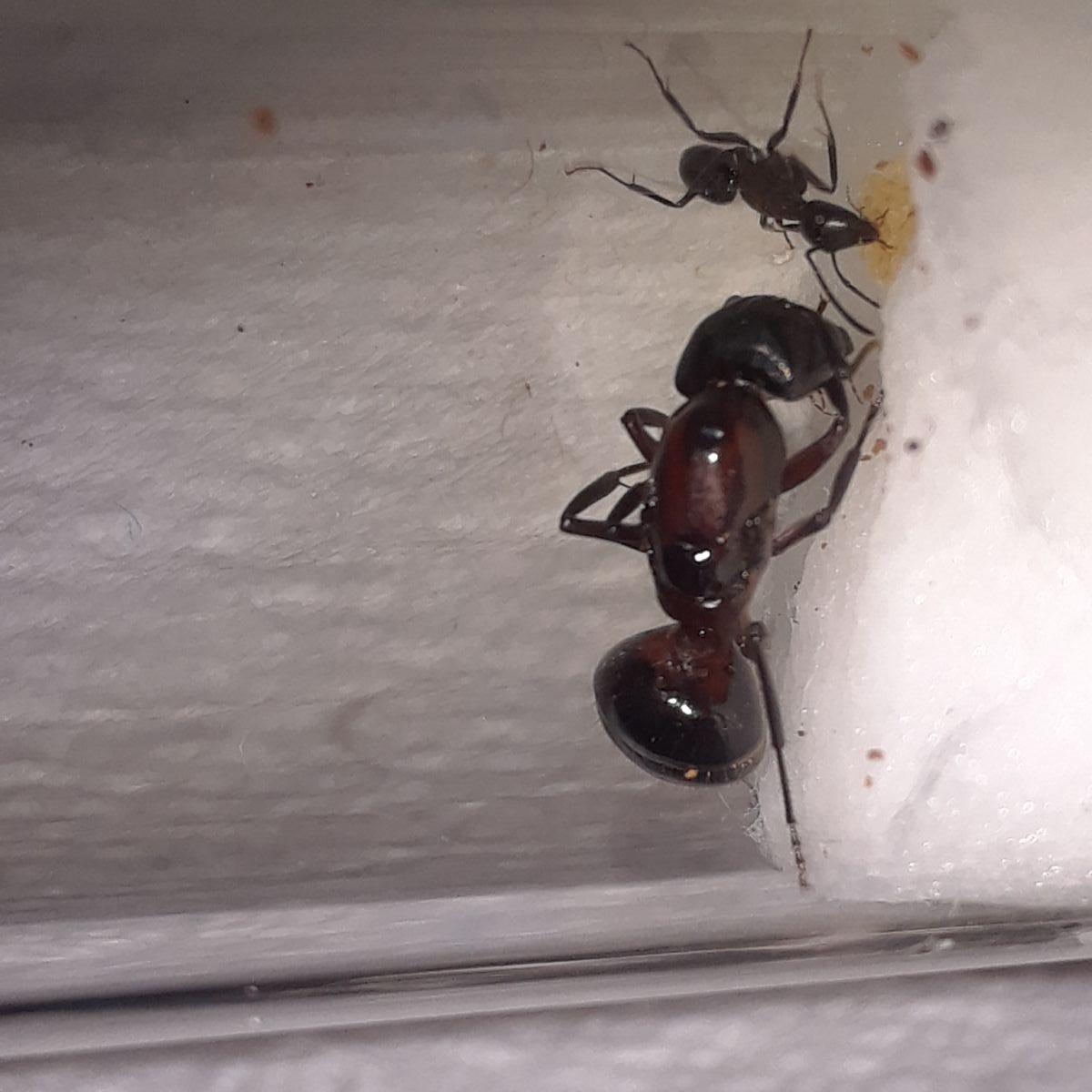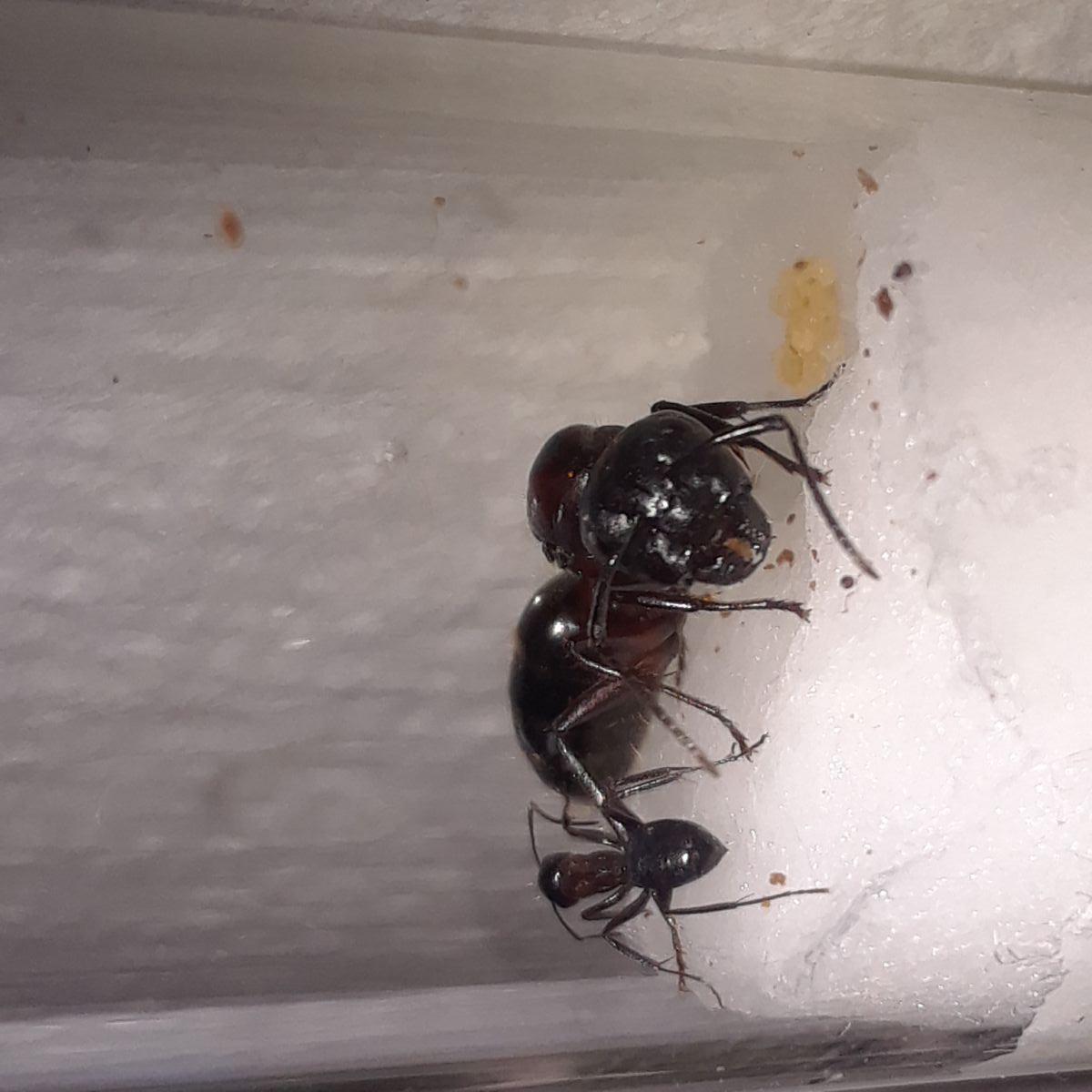Date Collected: 4-22-18
Habitat: Small clearing in a forest of Ash, Pine and Maple.
Length: 1/2" to 9/16". I don't have a metric measuring tape at the moment.
Coloration: Black head, Black gaster, Reddish/Brown Mesosoma




Edited by Jamiesname, April 22 2018 - 3:30 PM.

















